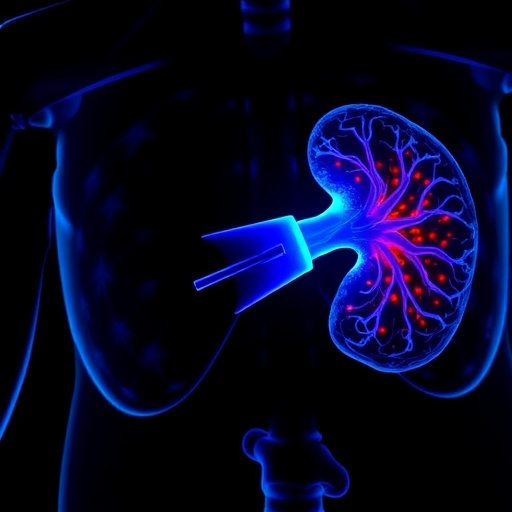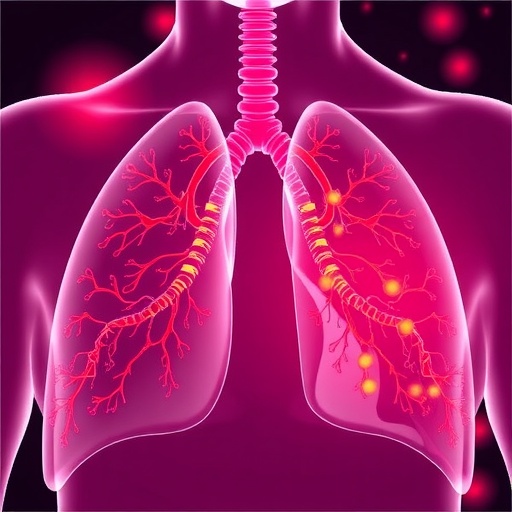In a groundbreaking development set to reshape prostate cancer research globally, scientists have unveiled a novel animal model that leverages the co-treatment of zinc and testosterone to induce tumorigenesis in the prostate gland. This innovation addresses a critical challenge faced by under-resourced regions, particularly in sub-Saharan Africa, where the scarcity of suitable preclinical models has stymied progress in understanding and combatting this devastating disease. By combining high doses of zinc with testosterone in Wistar rats, researchers have succeeded in replicating early-stage prostate cancer pathology, thus providing an invaluable tool for future therapeutic explorations.
Prostate cancer remains one of the leading causes of cancer-related morbidity and mortality among men worldwide. The molecular underpinnings of this disease are complex and heterogeneous, with multiple genetic and environmental factors contributing to its onset and progression. Animal models are indispensable in unraveling these complexities, enabling detailed mechanistic studies and the evaluation of potential treatment strategies. However, the lack of appropriate and accessible models has particularly hampered research efforts in resource-limited settings, underscoring the urgent need for innovative solutions tailored to global research landscapes.
The newly designed model capitalizes on the known but separately observed effects of zinc and testosterone on prostate tissue. Testosterone, a principal androgen hormone, has been long associated with cellular proliferation within the prostate but rarely leads to malignant transformation when administered alone. On the other hand, zinc, an essential trace element, plays multifaceted roles in cellular metabolism and gene regulation, with aberrant zinc homeostasis implicated in carcinogenic processes. By administering high doses of zinc in tandem with testosterone intramuscularly, the researchers have successfully induced histopathological changes that closely mimic human prostate intraepithelial neoplasia and early adenocarcinoma.
Detailed histopathological analyses revealed that testosterone alone induced epithelial hyperplasia characteristic of increased cellular proliferation but did not generate the hallmark features of carcinoma such as abnormal glandular patterns. In contrast, high dose zinc administration at levels ranging from 10 to 100 mg/kg resulted in epithelial dysplasia across all prostate lobes, manifesting in architectural changes such as papillary and tufting glandular structures. These changes are indicative of high-grade prostatic intraepithelial neoplasia (HGPIN), widely regarded as a precursor stage to invasive prostate cancer.
Most strikingly, concomitant treatment with testosterone and the highest zinc dosage (100 mg/kg) led to overt tumor formation within the dorsolateral lobes of the prostate. The tumorous lesions exhibited central necrosis, disrupted glandular architecture, and the presence of luminal cells invading the stroma, signifying the transition from pre-cancerous states to early microinvasive adenocarcinoma. This phenotypic progression not only validates the model’s clinical relevance but also aligns closely with the pathological progression observed in human prostate cancer, lending credence to its potential as a translational research platform.
At the molecular level, the co-treatment induced profound alterations in the expression of key oncogenic and tumor suppressor genes commonly deregulated in prostate cancer. Notably, Tmprss2, a gene involved in prostate cancer progression often fused with oncogenic partners, was upregulated by an astounding 789.8-fold relative to controls. Akt1, a central node in the PI3K/Akt signaling pathway known for promoting cell survival and growth, exhibited a 2.93-fold increase in expression. This upregulation suggests enhanced proliferative and survival signaling in the co-treated rats.
Additionally, expression of platelet-derived growth factor receptor beta (Pdgfrβ), implicated in tumor angiogenesis and stromal recruitment, surged 15.89-fold, indicating an activated tumor microenvironment conducive to cancer progression. The tumor suppressor gene Tp53, often dubbed the “guardian of the genome,” also displayed increased expression, rising by 2.23-fold. While TP53 is generally mutated or downregulated in many cancers, its transient elevation might represent a cellular response to oncogenic stress or DNA damage induced by the co-treatment.
The significance of this model extends beyond its histological and molecular fidelity. It offers a versatile and ethical platform to probe prostate cancer initiation, progression, and the interplay between hormonal and mineral factors in a controlled setting. For regions like sub-Saharan Africa—where genetic diversity, environmental exposures, and healthcare resources differ markedly from Western populations—this model could serve as a cornerstone for tailored research initiatives. It opens avenues for testing novel therapeutics, understanding resistance mechanisms, and developing preventive strategies that reflect local disease dynamics.
Importantly, the model underscores the complex biological roles of zinc in prostate carcinogenesis. Zinc homeostasis has been a contentious topic, with some studies advocating its protective roles against oxidative stress and others highlighting its potential pro-tumor effects at dysregulated levels. This zinc-testosterone co-treatment paradigm offers a unique lens for dissecting these dualistic effects, facilitating discovery of molecular checkpoints and therapeutic targets within zinc-related pathways.
The implications for human health are profound. Prostate cancer’s heterogeneous nature demands diverse research tools to mirror the disease spectrum. By providing a model that reproduces early carcinogenic events, scientists gain a critical advantage in intercepting tumorigenesis at its nascent stages. Future research leveraging this model could illuminate biomarkers for early diagnosis, optimize androgen deprivation approaches, and explore zinc modulation as a therapeutic axis.
Moreover, the model’s ease of implementation and the relative affordability of its components make it accessible for laboratories in resource-limited settings, thereby democratizing prostate cancer research. Local researchers can harness this tool to delve into population-specific disease characteristics, enriching the global scientific dialogue with insights grounded in diverse genetic backgrounds and environmental contexts.
This study’s convergence of endocrinology and micronutrient biology exemplifies the multidisciplinary ingenuity needed to tackle complex cancers. It reconfirms that synergistic interactions between hormones and metals can profoundly influence carcinogenic pathways, a concept with parallels in other hormone-sensitive malignancies.
Looking ahead, validation of this model across different rat strains and extended longitudinal studies will be key. Further exploration of downstream signaling pathways and immune responses triggered by zinc-testosterone co-administration could unravel novel intervention points. Integration of genomic and proteomic profiling will deepen understanding of molecular cascades orchestrating tumor initiation and evolution.
In conclusion, the zinc-testosterone co-treatment model represents a pivotal advancement, not only filling a critical gap in prostate cancer research models but also fostering equitable scientific progress. Its fidelity to human disease pathology and feasibility for widespread adoption position it as a beacon for future discoveries, therapeutic innovations, and ultimately, improved patient outcomes against a formidable global health challenge.
Subject of Research: Prostate cancer tumorigenesis induced by zinc and testosterone co-treatment in an animal model.
Article Title: The impact of zinc and testosterone co-treatment on tumourigenesis in prostate cancer: a novel model.
Article References:
Yeboah, K.O., Atawuchugi, P., Baah, F.K. et al. The impact of zinc and testosterone co-treatment on tumourigenesis in prostate cancer: a novel model. BMC Cancer 25, 1552 (2025). https://doi.org/10.1186/s12885-025-14893-4
Image Credits: Scienmag.com
DOI: https://doi.org/10.1186/s12885-025-14893-4
Tags: androgens and prostate healthcancer morbidity and mortality in men.early-stage prostate cancer pathologyenvironmental influences on prostate cancergenetic factors in prostate cancermolecular mechanisms of prostate cancerprostate cancer research innovationprostate tumorigenesis animal modelresource-limited research solutionssub-Saharan Africa cancer studiestherapeutic explorations in prostate cancerZinc and testosterone co-treatment





